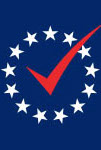Date Published: 2009-08-01
Author(s):
R. Michael Alvarez, California Institute of Technology
Thad E. Hall, University of Utah
Abstract:
The practice of voter registration has a long history in the United States. In 1800, Massachusetts was the first state to impose a voter registration requirement. By Reconstruction, voter registration was used in a handful of states, typically in urban areas, as a tool to prevent multiple voting. By early in the twentieth century, most states required voter registration.
In recent decades, there have been many initiatives to make voter registration easier and more convenient for voters. At the federal level, the National Voter Registration Act (NVRA, 1993) and the Help America Vote Act (HAVA, 2002) both sought to ease the registration process for eligible voters. For example, NVRA made the registration process available in government agencies and by mail and HAVA required that most states develop statewide computerized voter lists, among other reforms. At the same time, many states shortened pre-election registration deadlines, allowed for election-day voter registration, and worked in other ways to make the registration process easier.
Voter registration regulations currently in the United States look like a patchwork quilt: states have different deadlines for registration before an election, they use different registration forms, and some states even allow some eligible citizens to register online.4 Despite these varying practices, there are some important commonalities in how voter registration is practiced in every state. In the United States, voter registration is voluntary (eligible citizens do not have to register) and is passive (eligible citizens have the responsibility for registering with the appropriate government authority in their state).5 From an international perspective, the voluntary and passive nature of voter registration in the United States is not unique, but many other nations have voter registration systems that are compulsory and/or active (appropriate governmental authorities are required to find and register eligible citizens).
In this chapter, we argue that, despite federal and state efforts to make voter registration easier and more convenient for voters, the existing patchwork quilt of registration practices and regulations remain a barrier to some many eligible citizens. This patchwork quilt has produced a voter registration system that is likely more costly and less accurate that other types of voter registration systems. Thus, the United States should consider a process for implementing an active, rather than passive, voter registration process. Implementation of an active voter registration process should make registration issues less of a burden for many eligible citizens, lower the costs of election administration, and produce a voter registry that is both more accurate and more comprehensive.
